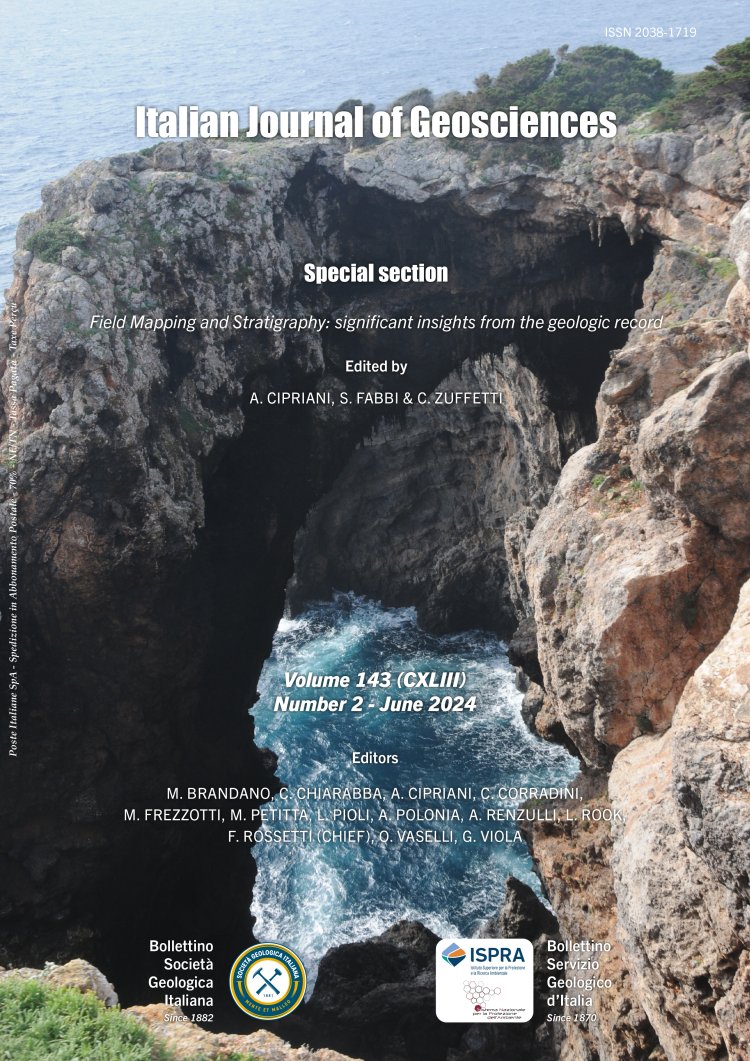

Fracture analyser: a Python toolbox for the 2D analysis of fracture patterns
Lorenzo Borghini1, Giulia Striglio2, Giulio Bacchiani3, Vincenzo La Bruna4, Fabrizio Balsamo2, Lorenzo Bonini1,5 & Francisco H.R. Bezerra4
1Department of Mathematics and Geosciences, University of Trieste, Via Weiss, 2 34128 Trieste, Italy.
2Department of Chemistry, Life Science and Environmental Sustainability, University of Parma, Parco Area delle Scienze, 11/a 43124 Parma, Italy.
3Department of Engineering and Architecture Parco Area delle Scienze, 181/A 43124 Parma.
4Universidade Federal Do Rio Grande Do Norte, CEP 59078-900 Caixa postal 1524, Natal, RN, Brazil.
5Istituto Nazionale di Geofisica e Vulcanologia, Roma, Italy.
Corresponding author e-mail: lorenzo.borghini@phd.units.it
Volume: 143 (2024) f.2
Pages: 314-328
Abstract
Fractures are the most common result of rock brittle failure in the Earth’s crust. Their presence, distribution, orientation, and interconnection are some of the main parameters that control rock’s mechanical characteristics and fluid flow. The arrangement of fractures on outcrop analogues is critical in predicting rock mass integrity and subsurface fluid migration and storage. Here, we present the application of Fracture Analyser, a Python tool, in analysing two field case studies. We performed the analysis remotely from manually interpreted images of a fractured vertical wall of siliciclastic turbidites and a horizontal pavement of karstified limestone. To test our tool, we analysed the two outcrops at different scales: the first case, i.e., the siliciclastic turbidites vertical wall, from images at a ground resolution of about 0.0005 m/pixel; the second case, the karstified limestone pavement, with a ground resolution of about 0.04 m/pixel. To demonstrate the efficiency of Fracture Analyser in objectively and repeatedly quantifying fracture attributes and the fractured state of an outcrop from a given dataset, after the digitalisation of fractures we quantify fracture pattern attributes such as number, length, spatial orientation, spatial position, angle between scanline and fractures, apparent spacing, fracture density (P20), and fracture intensity (P21). The examples presented in this study demonstrate the efficacy of Fracture Analyser in quantifying fracture pattern attributes.
Keywords
Get Full Text Supplementary Material